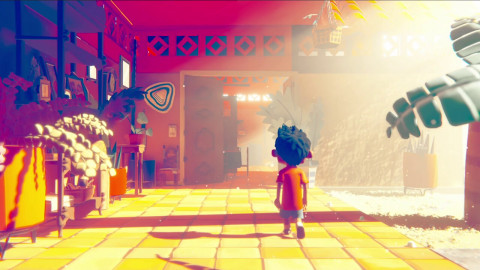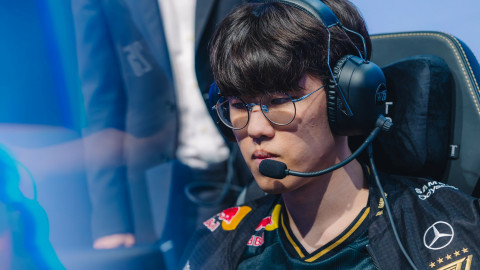How to use ‘Guard’, which changes by settings
Guard is the most basic defense measure, and you can block an opponent’s attack by using your directional keys or the D key. You can use the opposite direction arrow key of where the opponent is — the key that moves you step backward. What’s important is that if you have the ‘Move backward to guard’ setting ON, you can only guard by using the directional keys.
| Move directional keys to guard ON: Cannot guard with D key Use shortcut key to guard ON: Cannot guard with directional keys |
You have to choose either the directional keys or a shortcut key, so you should choose depending on your gaming environment, experience, and skillfulness. For example, it’s not easy on mobile to press several keys at once, so it’s more convenient to guard with directional keys. On PC, the keyboard shortcut is more convenient to press when you want to press it, so you should choose the easier way.
| Directional key guard pros and cons: Easy to use, but is difficult to react when moving backward Keyboard Shortcut guard pros and cons: If you’re a user that is used to fighting games that guard with directional keys, there’s a high chance of making mistakes |

‘Guard Gauge’ which is consumed when you successfully guard
When you successfully guard an opponent’s attack, your guard gauge decreases. The long blue bar at the top of the fighting screen is the guard gauge. When the guard gauge is 0, you cannot guard, and you will be hit by your opponent’s attacks continuously, so you have to keep track of it. As time goes, the gauge recovers naturally, but if you are in a guarding motion, it does not recover. Therefore, you have to play a strategy that is naturally holding guard, but you still need to keep track of the gauge to make time to recover as well.

Basic ‘Guard’ used in actual fights
Guarding is usually used to block an opponent’s basic attacks and active skills to counter them. When you successfully guard an active skill, the fighter who guarded can act first, so you can get the upper hand in the mind game. However, you cannot guard active skills that can grapple, finishers, or ultimate skills.


‘Guard’ used when predicting your opponent’s escape
When you are playing a combo, you will get the feeling of when your opponent would use escape to counter. Actually, this kind of “feeling” can only be obtained through constantly fighting with the fighter of your choice. When you can anticipate when your opponent would escape at a certain timing of your combo attack, you can use the strategy of stopping your attack to guard and counter again. If you succeed, the opponent wastes one power gauge, and their escape will be on cooldown, so they would have to fall to the following combo.

‘Distance management’ you need to know along with guarding
When you maintain a guard stance, your opponent will do an attack that can set off the guard like a grapple skill. They try to approach quickly using their charging skill and break the guard. Therefore, it’s very important to manage the distance between yourself and your opponent well. You need to use the correlation among the skill types.
Basically, you need to induce an opponent’s attack from outside the range of their attack. If you figure out in advance their skill distance and range, the opponent wastes their skill. Afterward, you can counter them with a charging skill to counter right away. The key point is to know your and your opponent’s skill range to evade by distance management and to counter.

Examples of distance management in actual fights
Fighters that have several grapple-type skills are weak against ranged attacks. If you contain your opponent with long-range skills to maintain a long distance, you can face them more easily. If they approach, interfere by using dodge (S) or a skill, and face them again from afar. It’s playing the head game to induce your opponent to waste their skills.
Understand your fighter’s skill range as well as the skill range of the fighters that are picked often in fights in practice mode. Then, learn the beneficial distance management to use in actual fights through your fighting experience.


Sort by:
Comments :0







